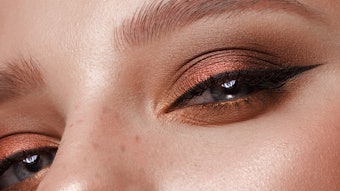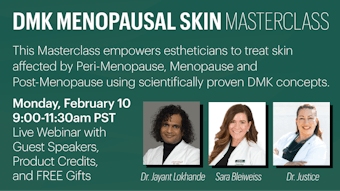
The pursuit of eternal youth has become a global preoccupation with consumers spending more and more money—and some even going to extreme lengths—in effort to turn back the clock on maturing skin. Once only found in the medicine chests of women in their 50s and 60s, anti-agers are increasingly appealing to a younger audience keen to put the brakes on the aging process. And not even men are immune to the promise of eternal youth, as anti-aging creams have become an important contributor to growth in the burgeoning $1.5 billion men’s skin care segment.
Asia-Pacific lags behind
While the anti-aging trend is a global phenomenon, the drive to maintain a youthful appearance is strongest in the affluent Western markets of North America, Western Europe and Australasia, which spent a combined $7.7 billion on wrinkle-reducing facial creams in 2007, according to Euromonitor International’s new 2008 cosmetics and toiletries database. Anti-aging facial creams are also enjoying a booming demand in Latin America, where consumers put a high priority on looks, and the market saw growth of 15% in 2007 to $5.5 billion. In Brazil, more than one in every three U.S. dollars spent on skin care goes toward a facial anti-ager.
Eastern Europe has a relatively underdeveloped anti-aging market, but as economic fortunes in the region rise, so does interest in age-delaying beauty care. Sales of facial anti-agers nearly tripled from 2002–2007 to $3.9 billion, according to new Euromonitor International figures.
While skin care is a beauty priority in many Asian markets—four of the six biggest per capita spenders on skin care are in this region—anti-aging is seen as less important than skin whitening and standard cleansing, toning and moisturizing products. At $13.1 billion, Japan is the largest skin care market in the world, but less than 10% of that spending is accounted for by anti-agers. In the United States and the United Kingdom, the figure is closer to 30%. However, China, India, Vietnam, Thailand and Indonesia are seen as important new growth areas for the anti-aging market as international beauty trends filter into these booming new economies.
Youthfulness: A beauty priority
A growing appearance-consciousness among consumers is fueling dynamism in the global anti-aging market. People are under a great deal of pressure to look good all the time, something being instigated by a mass media that often promotes an unrealistic archetype of beauty. Healthier lifestyles, too, mean that, as they grow older, consumers are increasingly feeling more youthful than their actual age would suggest, and anti-agers are seen as a way to ensure one’s outer appearance reflects this inner youthfulness.
The market is also benefiting from manufacturers’ attempts to broaden the consumer base for anti-agers. The growth in products designed to prevent the skin from aging, rather than those that claim to turn back the clock on more mature skin, has attracted consumers in their 30s and 40s to the market. Men’s anti-agers have also become a small but vibrant segment.
It is not only volume sales that are on the rise, however; value sales are also achieving strong growth. Efficacy is of prime importance in this market, and price is seen as a key determinant of quality. Premium brands do well in the anti-aging segment, and five of the 10 leading global brands are prestige labels. Increasingly, too, consumers are trading up to exclusive, niche anti-aging brands. And even mass brands are contributing to unit price rises, with labels offering products at a price not far below those of premium alternatives.
Advanced ingredients
The emergence of advanced cosmeceutical brands is one of the key developments to come out of the demand for progressively more efficacious anti-agers. A cosmeceutical is a product that is marketed as a cosmetic but reputedly contains biologically active ingredients and claims to have drug-like benefits. Some of the ingredients that have become big sellers in the anti-aging market as a result of this trend include retinoids, which can be so powerful that products containing them are actually classified as medicines; alpha hydroxy acids, which strip the skin of the dead outer layers to reveal fresher skin underneath; and collagen-promoting peptides. As cosmeceuticals gain momentum in the anti-aging market, the variety of ingredients used and range of skin aging problems they claim to solve are multiplying fast.
Anti-agers that purportedly offer transdermal delivery of skin-plumping ingredients, such as collagen, are among the more recent developments in the cosmeceuticals market. Other products claim to replicate the effects of professional antiwrinkle products.
The most advanced—and controversial—anti-aging cosmeceutical to come onto the market to date uses stem cell technology. The resulting products claim to transform aging skin from the inside by stimulating the generation of new skin cells while repairing DNA, and it has not taken long for other brands to pick up on the technology, with more stem cell wrinkle creams appearing in the marketplace.
At-home treatments
Another trend in cosmeceutical anti-agers brings beauty treatments to the at-home market, notably in the form of laser skin rejuvenating devices. Large manufacturers have announced plans to develop light-based anti-aging devices, and other companies have begun joining forces in an effort to sell skin care products to be used in conjunction with proprietary intense pulsed light technology direct to the consumer. The trend is even attracting manufacturers from beyond the cosmetics market, and some companies outside the beauty industry are said to be developing their own versions of electric anti-aging products.
Other brands seek to complement the cosmetic surgery market by offering postoperative formulations. One company, for example, aims to relieve the redness and tightness often experienced after surgery, while another is teaming up with Botox* creator Allergan to offer a range of skin care products that complement in-office esthetic procedures and are to be sold exclusively through U.S. physicians’ offices.
As growing numbers of consumers resort to cosmetic surgery and treatments in the pursuit of younger-looking skin, this approach is expected to gain momentum going forward. Estimates suggest plastic surgery will rise to be an approximately $3.5 billion business in the United Kingdom alone by 2011.
Natural beauty
At the same time that anti-aging ingredients are becoming more technologically advanced, the popularity of natural and organic cosmetics are also on the rise. The latter trend is arguably the most significant in shaping cosmetic innovation today and has now inevitably started to impact cosmeceutical formulations as manufacturers look for natural answers to the question of treating aging skin.
Among the natural ingredients that are finding their way into the anti-aging market are food and drinks such as chocolate, coffee, wine and rice; botanicals including hibiscus, garden cress and exotic plants harvested from remote locales such as the Amazon; and ingredients used in traditional Eastern medicine. Several brands have also begun offering antiwrinkle products that attempt to straddle the divide between science and nature.
Growing product scrutiny
With so much innovation going on, keeping the spotlight on facial anti-agers, and maintaining consumer interest, it is little wonder that new Euromonitor International forecasts point to growth of almost 8% per year from 2007–2012, more than twice the predicted gains in the cosmetics and toiletries market overall. And those figures only include dedicated facial anti-agers. It is worth noting that anti-aging properties have found their way into other beauty products, too, helping to inject new vitality into sales. Brands in sectors as disparate as color cosmetics, hair care, bath and shower products, oral hygiene and deodorants have begun positioning their products as tools in the fight against aging. There even exists a fragrance claiming to shave up to six years off the wearer’s looks.
However, going forward, anti-aging brands may have to work harder to attract sales. Increasingly, it is how a product’s benefits are communicated, rather than how the product is formulated, that is the key to winning consumers. The past year has seen increased media attention on the question of whether anti-agers actually work, and consumers have become more skeptical of marketing claims. In late 2007, U.K. pharmacists lashed out against top-selling anti-aging brands, describing claims about their rejuvenating properties as scientifically incomprehensible. Regulators in several countries, including Australia and the United Kingdom, have also begun scrutinizing claims more closely, and one company has even had to pull advertisements that claimed one of its anti-aging brands was an “alternative option to a facelift.”
This growing skepticism has meant consumers are increasingly being persuaded by independent studies on choice products—and not by manufacturers themselves. In early 2007, a U.K. documentary found a scientific backing for the anti-aging claims made by one particular brand’s beauty serum. The program led to a shopping frenzy in which the beauty retailer sold out an entire year’s supply of the product within two weeks of the broadcast.
Of course, another effect of rising cosmeceutical and anti-aging product demand is possible growing legislation regarding them. The increased scrutiny of product claims could mean greater regulation of the cosmeceuticals market and a subsequent slowdown in product innovation. Anti-agers found to live up to their claims by causing physiological changes to the skin could be reclassified as medicines and are subject to far more stringent regulations than a pure cosmetic.










